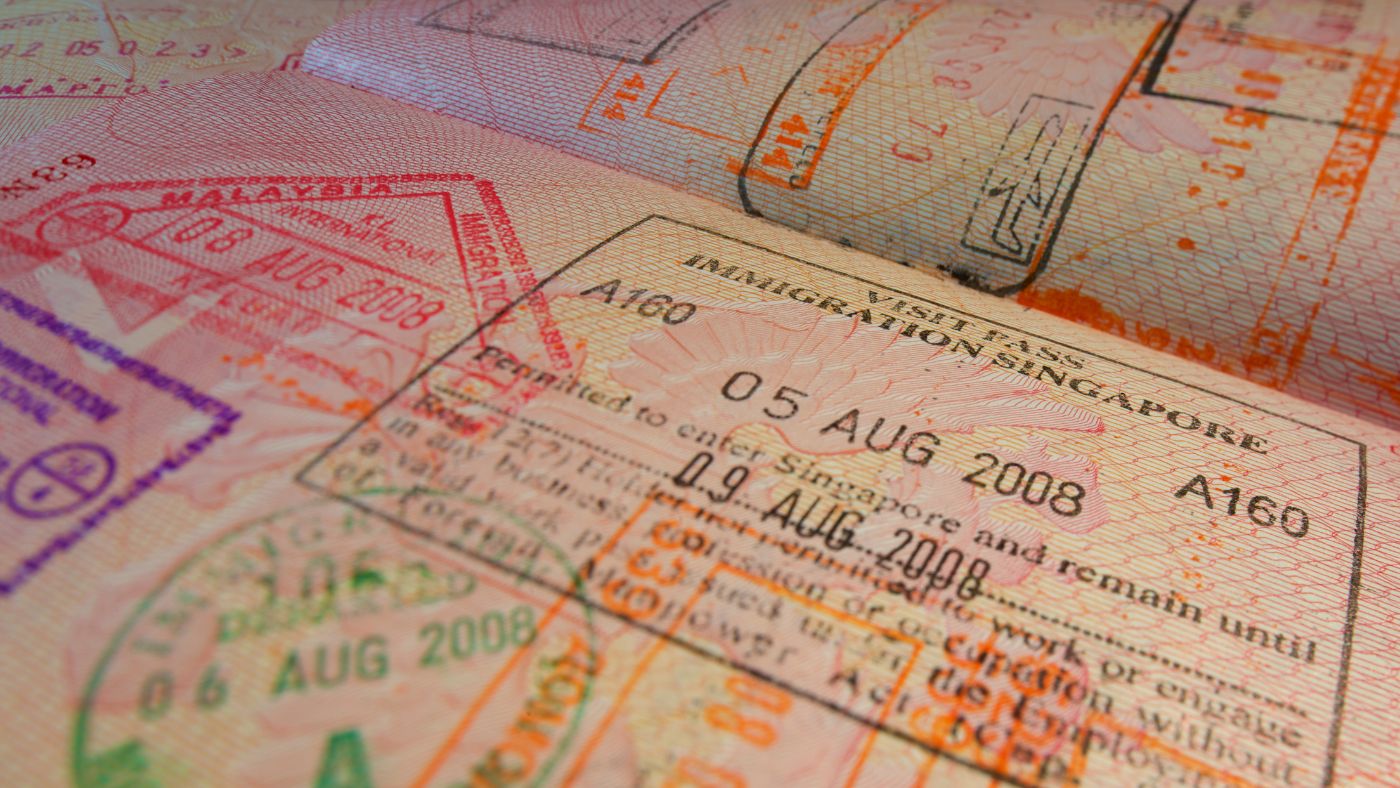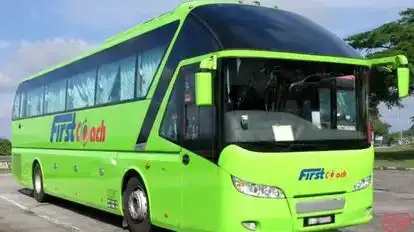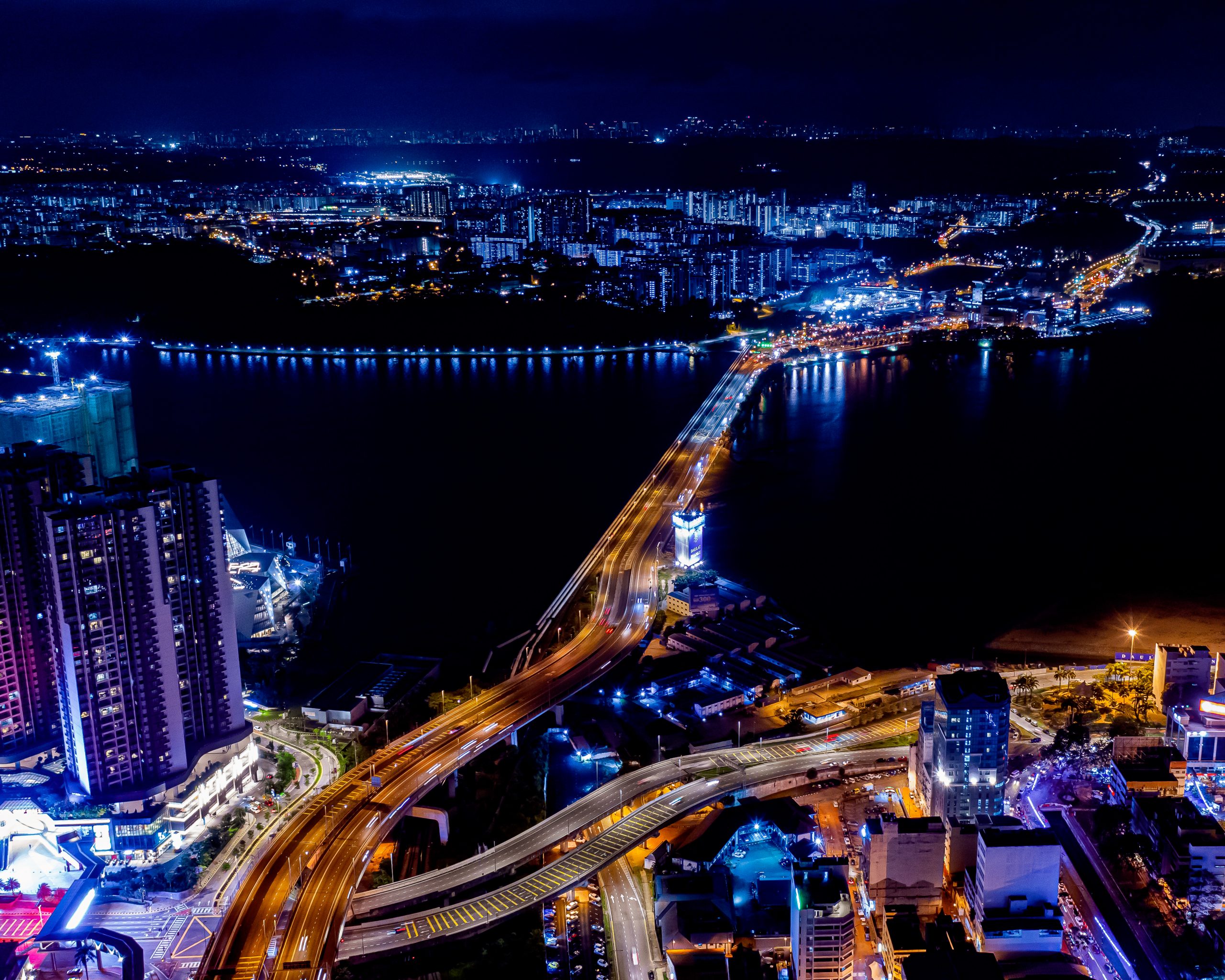Guide to Singapore-Malaysia Land Border Crossing: Travel Tips, Steps, Visa, and Immigration
Crossing the land border between Singapore and Malaysia is one of the most popular and convenient ways for travelers to visit Malaysia. The proximity of the two countries and the efficient connectivity through the Johor-Singapore Causeway and Tuas Second Link makes it easy for visitors to travel between Singapore and Johor Bahru or other parts of Malaysia. Whether commuting for business, leisure, or even a weekend getaway, this guide provides comprehensive travel tips, steps, and visa and immigration information to ensure a smooth journey.
Key Land Border Crossings

There are two main land border crossings between Singapore and Malaysia are –
- Woodlands Checkpoint (Johor-Singapore Causeway)
This is the most popular and busiest route, connecting Woodlands in Singapore to Johor Bahru in Malaysia. The 1.05 km long Johor-Singapore Causeway handles many vehicles, buses, and pedestrians daily.
Learn more about things to know when you enter Woodlands Checkpoint - Tuas Checkpoint (Tuas Second Link)
This route, known as the Second Link, connects Tuas in Singapore to Gelang Patah in Malaysia. It’s less crowded than the Causeway and is ideal for travellers heading towards Kuala Lumpur or other destinations further up north.
Steps for Singapore to Malaysia Land Border Crossing
Here are the detailed steps to cross the Singapore-Malaysia land border:
- Travel to the Border
- If you’re taking a bus, you can head to Woodlands or Tuas via public buses such as SBS Transit and Causeway Link.
SBS Transit Routes | Causeway Link Buses
- If you’re taking a bus, you can head to Woodlands or Tuas via public buses such as SBS Transit and Causeway Link.
- Singapore Immigration (Exit Procedure)
- Queue at Immigration: Whether by bus, car or on foot, you must clear immigration at the Woodlands or Tuas checkpoint.
- Present Passport and Visa: Ensure your passport is valid for at least 6 months before departure.
Singapore ICA Immigration Information
- Crossing the Causeway or Second Link
- For those travelling by car or bus, after clearing Singapore immigration, you will cross either the Causeway or Second Link bridge.
- Malaysia Immigration (Entry Procedure)
- Upon arriving at the Johor Bahru checkpoint or Tuas Second Link in Malaysia, you must queue for Malaysian immigration clearance.
Immigration Malaysia Information
- Upon arriving at the Johor Bahru checkpoint or Tuas Second Link in Malaysia, you must queue for Malaysian immigration clearance.
- Arriving in Malaysia
- Once you’ve cleared Malaysian immigration and customs, you can continue your journey into Johor Bahru or other parts of Malaysia.
Malaysian Customs Information
- Once you’ve cleared Malaysian immigration and customs, you can continue your journey into Johor Bahru or other parts of Malaysia.
Visa and Immigration Requirements

Visa-Free Entry
- Singaporeans and most nationalities enjoy visa-free entry to Malaysia for tourism or business purposes for up to 30 days.
- ASEAN nationals (Brunei, Indonesia, Thailand, Philippines, etc.) also enjoy visa-free travel.
Malaysia Visa Information
Visa Required
- Nationals from China, India, and several other countries require visas to enter Malaysia.
- You can apply for an eVisa through the Malaysian eVisa website for a seamless application process.
Apply for Malaysia eVisa
Visa Extensions
- Travelers wishing to stay beyond their visa-free period can apply for an extension at the Immigration Department of Malaysia.
Arrival Card
- Malaysia no longer requires a Disembarkation/Embarkation (IMM.26) card. However, always double-check current regulations, as rules may change.
Travel Tips for a Smooth Border Crossing
- Avoid Peak Hours
- The Woodlands Causeway and Tuas Second Link can get heavily congested, especially during weekends, public holidays, and school holidays.
- Ensure Proper Documentation
- If you’re traveling by car, you’ll need an Autopass Card, which is used for paying Vehicle Entry Permit (VEP) fees and tolls. Ensure the card is loaded with sufficient funds.
- Check Traffic Conditions
- Check real-time traffic updates using apps like Google Maps, Waze, or local traffic websites.
- Malaysia’s Trafik Info service also provides updates on road conditions.
- Avoid travelling during peak hours (early morning or late evening), particularly on Friday and Sunday afternoons.
Traffic Updates and Border Live Cameras
- Ensure Proper Documentation
- Ensure your passport is valid for at least 6 months from your entry date.
- Currency and Toll Payment
- After crossing the border, it is a good idea to carry Malaysian Ringgit (MYR) for tolls, snacks, or other expenses.
- You’ll need a Touch ‘n Go card for tolls on Malaysian highways.
- Health and Safety Protocols
- Travellers may be required to present proof of vaccination or take pre-departure tests depending on the current health situation. Ensure you are aware of the latest requirements.
- Parking and Public Transport
- Parking options at the checkpoint terminals are available but can fill up quickly during peak travel periods.
- If you’re travelling by public bus, ensure your EZ-Link or NETS FlashPay card has sufficient stored value. If you plan to take a private bus, book your tickets in advance. Check out the top Cross-Border buses from SG to Malaysia.
- Pack Light and Stay Hydrated
- Long queues are standard during peak times. If crossing the border on foot or via public transport, pack light and carry water to stay hydrated.
Returning to Singapore: What You Need to Know
- On your return journey, the process is similar to your initial crossing.
- Singapore Immigration requires visitors to fill in an SG Arrival Card before entry (electronic submission recommended).
- Be mindful of customs regulations on dutiable items, particularly alcohol and tobacco, as Singapore has strict customs rules.
Singapore Arrival Card Submission Requirements
All travelers, except those listed below, must complete and submit their Singapore Arrival Card before arriving in Singapore.
Exemptions for SG Arrival Card:
- Transit or Transfer Passengers: Travelers merely pass through Singapore without seeking immigration clearance.
- Residents Entering via Land Checkpoints: Singapore citizens, Permanent Residents, and Long-Term Pass holders entering Singapore through land checkpoints.
- Group Submission: If you are travelling to Singapore as a group, you can submit a single Arrival Card for the entire group.
Submit SG Arrival Card needs to be submitted by selecting one of the below options –
| Singapore citizens, Permanent Residents & Long-Term Pass Holders | Foriegn Visitors |
| Submission of health declaration for: -Singapore citizens -Singapore permanent residents -Student’s Pass holders -Dependant’s Pass holders -Long-Term Visit Pass holders -Work Pass | Submission of arrival information and health declaration for – -All foreign visitors -In-Principle Approval (IPA) letterholders |
Note: Long-Term Pass holders include holders of Student’s Pass, Dependant’s Pass, Long-Term Visit Pass, and Work Pass.
Transportation Options for Singapore to Malaysia Land Border Crossing
By Bus

- Regular bus services, such as Causeway Link, Firstcoach, and Transtar Travel, operate between Singapore and Malaysia. You can easily book your bus tickets online on redBus. You can also take advantage of their promotional offers and exclusive discounts on bus operators and routes.
- Buses depart from key locations in Singapore, such as Queen Street Bus Terminal, Novena Square, Star Vista, Golden Mile Complex, and Woodlands Checkpoint.
Check details of Buses from Woodland Checkpoint to Malaysia
By Train
- Keretapi Tanah Melayu Berhad (KTMB) operates train services from Woodlands Train Checkpoint to Johor Bahru and other destinations in Malaysia.
Book KTMB Train Tickets
By Car
- Driving from Singapore to Malaysia is popular, but ensure you have the necessary documents, including:
- Autopass Card (for Singapore-registered vehicles)
- Touch ‘n Go card for tolls
- Valid vehicle insurance for Malaysia
By Walking
- Pedestrians can cross the Causeway between Woodlands and Johor Bahru. It takes around 45 minutes to an hour on foot, depending on traffic conditions and queues.
Final Thoughts
Crossing the Singapore-Malaysia land border can be a smooth and convenient process if you plan ahead and are well-prepared. Whether you’re driving, taking a bus, or crossing on foot, knowing the visa requirements, traffic conditions, and immigration procedures will ensure a hassle-free journey. With the proper preparation, you’ll quickly enjoy your trip across the border to Malaysia!


